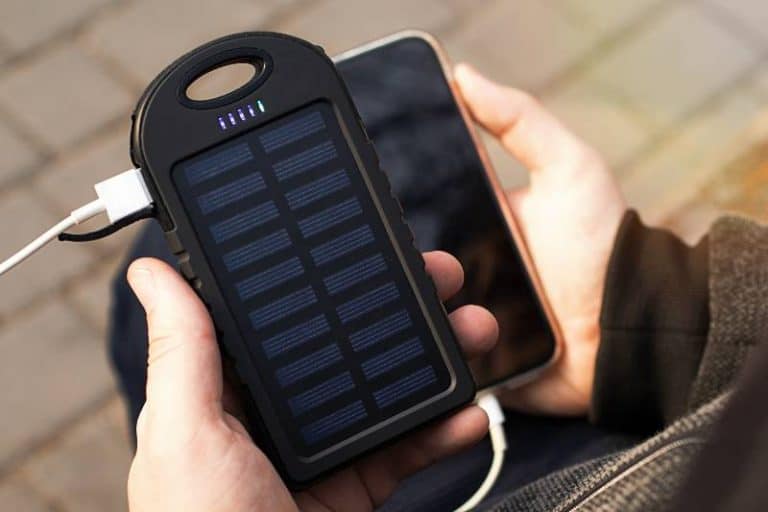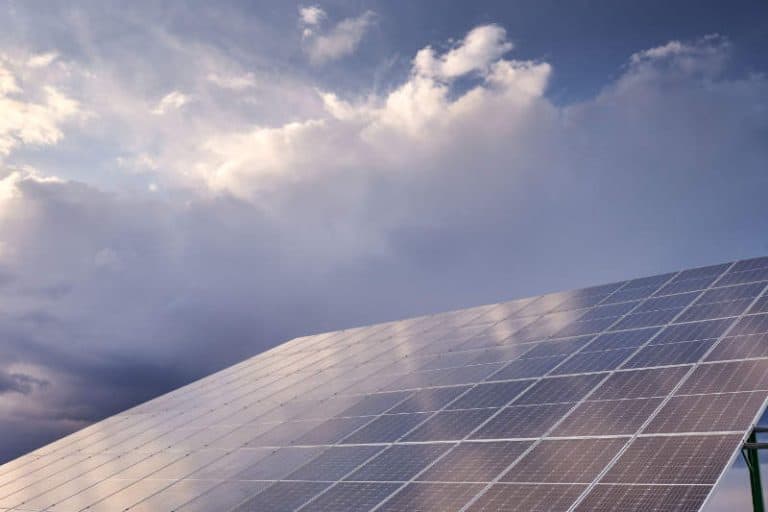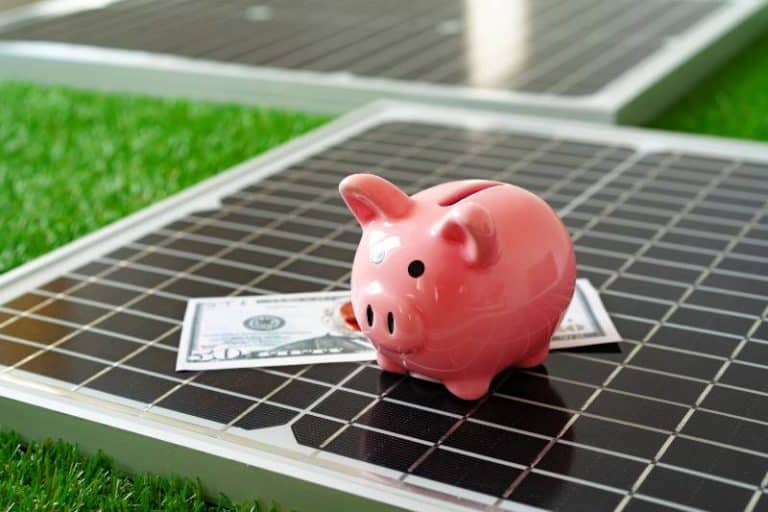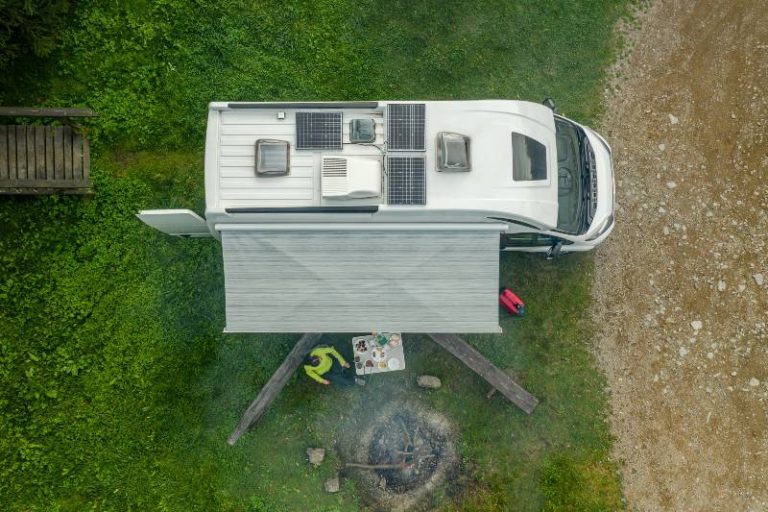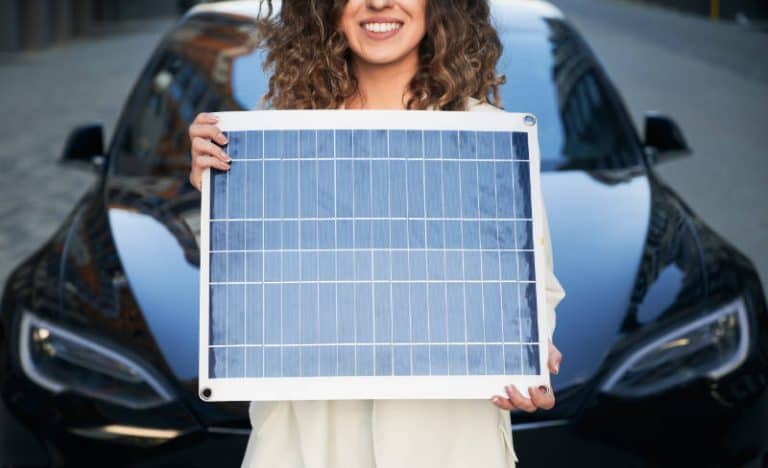Harness the Sun: Portable Solar Energy for Beach Trips
Taking a beach vacation is one of the most enjoyable and sought-after experiences for many travelers. Not only do you get to soak up some sunshine, dig your toes into the sand, and take in picturesque views – you can also make sure that your trip is eco-friendly. With a portable solar energy system, powering up devices while skipping out on environmental guilt has never been easier. Portable solar energy for beach vacations could be just the ticket when it comes to keeping modern comforts without compromising sustainability. Read on to find out more!
Portable solar energy offers an eco-friendly and efficient power solution for beach vacations. By harnessing sunlight, portable wireless charging devices like solar panels and portable solar chargers can provide reliable power, allowing beach-goers to keep their gadgets charged while enjoying the sun, sea, and sand.

Key Takeaways
- The process of setting up and using portable solar devices is straightforward but requires careful consideration of factors such as the location of setup for maximum sunlight exposure, safety precautions to prevent device damage, and the compatibility of the solar device with your gadgets.
- Portable solar devices, including solar panels and solar-powered gadgets, provide an eco-friendly, convenient, and cost-effective source of power, particularly for outdoor activities such as beach vacations. These devices harness the sun’s energy, reducing dependency on traditional power sources and promoting environmental sustainability.
- Portable solar devices, including solar panels and solar-powered gadgets, provide an eco-friendly, convenient, and cost-effective source of power, particularly for outdoor activities such as beach vacations. These devices harness the sun’s energy, reducing dependency on traditional power sources and promoting environmental sustainability.
The Concept of Portable Solar Energy
Solar energy is a renewable form of energy harnessed from the sun’s rays. It is converted into electricity or heat using solar panels or solar thermal collectors. This process of energy conversion is environmentally friendly and a significant player in the movement toward sustainable energy sources.
Now, let’s take that concept of solar energy and make it mobile. This is where the concept of portable solar energy comes in. Portable solar energy systems are compact, mobile units that generate electricity using the sun’s rays. They are often designed to be lightweight and easy to transport, providing a versatile and renewable energy source wherever it’s needed.
A portable solar energy system is typically made up of a solar panel, a battery for storing the energy collected, a charge controller that regulates the flow of electricity into the battery, and an inverter that converts the stored DC power into AC power for use in devices.
These systems are available in various sizes and capacities, from small personal devices used to charge cell phones, and laptops, to larger units that can power a campsite or even an RV. They can be used virtually anywhere the sun shines – from the top of a mountain to the middle of a desert.
Benefits of Portable Solar Energy Systems:
- Renewable and Clean Energy Source: Portable solar energy systems use the sun’s energy, which is renewable and does not release harmful emissions or pollutants into the environment. This makes them an excellent choice for those seeking to reduce their carbon footprint.
- Versatility and Mobility: These systems are designed to be lightweight and compact, making them easy to carry around. Whether you are going on a camping trip, a trek up a mountain, or simply need a backup power source during a power outage, a portable solar energy system can be your go-to power source.
- Energy Independence: With portable solar energy, you are not reliant on the grid for power. This can be beneficial in many situations, such as when traveling in remote locations or during power outages.
- Cost-Effective: After the initial purchase cost, the ongoing costs for portable solar energy systems are minimal since they harness energy from the sun. Over time, this can lead to significant savings, especially if you frequently use the system.
- Ease of Use: Most portable solar energy systems are plug-and-play, meaning they are easy to set up and use. This makes them user-friendly, even for those who are not technologically inclined.
Examples of Portable Solar Energy Systems
- Solar Power Banks: These are compact devices that store solar power and can be used to charge smartphones, tablets, and other USB-powered devices. They are handy for backpacking trips, hikes, or any other outdoor activities where a power source may not be readily available.
- Portable Solar Panels: These are foldable panels that you can carry with you and set up anywhere to generate power. They are excellent for camping trips, RVing, or as an emergency power backup.
- Solar Generators: A solar generator is larger, more powerful units that are excellent for longer trips, power outages, or even as a primary power source for off-grid living. They come with larger batteries and often have multiple outlets for powering various devices.
To sum up, portable solar energy is a modern solution that merges renewable energy with the flexibility of being mobile. It can meet various requirements, from outdoor enthusiasts and eco-friendly consumers to people in remote areas who want a dependable and reasonably priced backup power option.
Utilizing Portable Solar Energy for Beach Vacations
Imagine you’re enjoying a day at the beach, soaking up the sun’s rays. Now, imagine converting those same sun rays into power to charge your devices, run your beach essentials, or even power a mini fridge. This is where portable solar energy comes in.
Utilizing portable solar energy systems for beach vacations provides an environmentally friendly and convenient way to power your devices and gadgets while enjoying your beach time. This is achieved by using portable solar panels, solar chargers, and solar-powered appliances. Here’s how you can use these systems:
- Portable Solar Panels: These are foldable and lightweight panels that you can set up to generate power for your devices. They often come with USB ports for direct charging mobile devices, or they can be connected to a portable battery for storing power.
- Solar Chargers: These are small devices, like solar power banks, that can be used to charge smartphones, tablets, speakers, and other gadgets. They are easy to carry and can be set up anywhere under the sun.
- Solar-Powered Appliances: There are also appliances designed to run on solar power. For instance, solar-powered coolers can keep your drinks and snacks cool without the need for ice. Other examples include solar-powered speakers for your beach party, and solar-powered fans to keep you cool.
Real-world examples of solar energy usage at the beach
- Solar-Powered Beach Tents: These are tents that come with built-in solar panels. They harness the sun’s energy to power built-in LED lights, USB charging ports, or even fans. For instance, the ‘Orange Solar Tent’ developed by Kaleidoscope and Orange Communication uses solar power to charge the occupant’s devices.
- Solar-Powered Coolers: Coolers like the ‘GoSun Chill’ are powered by solar energy to keep your drinks and food cool without the need for ice. This can be a game-changer for beach parties or picnics.
- Solar-Powered Speakers: Brands like Eton and Renogy offer solar-powered Bluetooth speakers, allowing you to enjoy your favorite tunes on the beach without worrying about the battery draining.
Different Types of Portable Solar Devices
The field of solar energy has seen substantial advancements, resulting in a plethora of portable solar devices. These devices offer an eco-friendly solution for various power needs, from charging a mobile phone to providing energy to a small campsite. Here, we will explore portable solar panels, and solar-powered devices, and provide a comparison of power output for various brands and types.
Portable Solar Panels
Portable solar panels are compact, foldable, and designed for mobility. They absorb sunlight and convert it into electricity that can be used directly or stored in a battery for later use. Here are two types of portable solar panels based on their technology:
- Monocrystalline Solar Panels: These panels are made from a single, pure crystal structure. They offer the highest efficiency and power capacity and are slightly more expensive.
- Polycrystalline Solar Panels: These panels are made from various crystal structures. They are less efficient than monocrystalline panels but are usually cheaper.
Several brands offer quality portable solar panels
- Goal Zero: Known for its high-quality solar products, Goal Zero offers a range of portable solar panels like the Nomad series, which are efficient and easy to carry.
- Renogy: Renogy’s portable solar panels, like the Eclipse series, are highly efficient and come with features such as USB ports for direct device charging.
- Jackery: Jackery offers the SolarSaga series portable panels, which are user-friendly and designed for outdoor usage.
Solar-Powered Devices
A variety of devices are powered by solar energy, and they offer a green solution to our daily energy needs. These devices can range from small appliances and personal gadgets to larger appliances:
- Solar Chargers and Power Banks: These devices store solar energy and use it to charge mobile phones, tablets, and other small electronic devices. For example, Anker and Hiluckey offer efficient solar power banks with high capacity.
- Solar Lights: Solar lights, including lanterns, flashlights, and even decorative garden lights, harness sunlight during the day and provide lighting at night. Brands like BioLite and MPOWERD offer quality solar lights.
- Solar-Powered Speakers: These devices charge themselves under the sun and can play music for extended periods. Eton Rugged Rukus and Honeywell Wireless are examples of solar-powered speakers.
- Solar Ovens: A solar oven uses solar energy to cook food or boil water. A popular example is the GoSun stove, which can cook a meal in just 20 minutes using only the sun’s energy.
- Solar Coolers: Solar-powered coolers keep your food and drinks cool without the need for ice or an external power source. The GoSun Chill is a great example of a solar cooker.
Comparison of Various Brands and Types
- Goal Zero vs Renogy vs Jackery (Portable Solar Panels): Goal Zero Nomad panels are known for their rugged build and reliability. They are slightly more expensive but are known for their efficiency and longevity. Renogy Eclipse series, on the other hand, are a more affordable alternative, offering decent efficiency with added features like USB ports. Jackery SolarSaga panels are user-friendly and perfect for casual outdoor enthusiasts. They are not as rugged as Goal Zero panels but come at a more affordable price point.
- Anker vs Hiluckey (Solar Chargers/Power Banks): Anker solar power banks are compact and highly efficient, making them perfect for charging small devices on the go. Hiluckey solar power banks come with a larger capacity and more USB ports, making them suitable for extended outdoor trips where multiple devices need charging.
- BioLite vs MPOWERD (Solar Lights): BioLite solar lights are known for their durability and long battery life. They offer various options from small personal lights to larger site lights. MPOWERD provides affordable and compact solar lanterns, known for their ease of use and portability.
If you’re looking for an environmentally friendly and easy way to meet your energy needs, portable solar devices are a great option. However, it’s important to think about the amount of power you need, how efficient the device is, the cost, and the brand’s reputation when deciding which one to purchase. Each brand and type has its own advantages, so the right choice will depend on your individual needs and preferences.
How to Set Up Your Portable Solar Device at The Beach
Here is a simple, step-by-step guide to setting up your portable solar device at the beach. For this guide, let’s use the example of a portable solar panel which is one of the most common portable solar devices:
Step-by-Step Guide:
- Find a Suitable Location: Look for a spot that receives direct sunlight for the majority of your beach day. Avoid spots under umbrellas, trees, or any other sources of shade.
- Set Up the Panel: Most portable solar panels are foldable. Unfold the panel and orient it towards the sun for maximum exposure. Some panels come with stands or have holes to allow for easy mounting on beach chairs or even beach umbrella poles.
- Connect the Devices: Use the cables provided with the solar panel to connect it to your devices or a portable battery. If the panel has a built-in USB port, you can connect your devices directly. If not, you’ll typically connect the panel to a battery, which in turn charges your devices.
- Let it Charge: Once everything is connected, leave your devices to charge. Make sure to check them periodically to avoid overcharging.
Tips and Precautions
- Maximize Sun Exposure: To get the most power, position your solar panel so it’s directly facing the sun and adjust its position throughout the day as the sun moves.
- Avoid Sand and Water: Keep your solar panel and connected devices away from sand and water to prevent damage. It might be useful to bring a dry towel or a waterproof mat to place your setup on.
- Monitor the Temperature: Electronic devices can overheat in direct sunlight, especially on a hot beach day. To avoid this, keep your charging devices in a shaded area or under a cover while they charge.
- Device Protection: Consider using a protective case for your devices to prevent damage from accidental drops or sand exposure.
- Check Compatibility: Make sure your solar panel is compatible with the devices you want to charge. Some devices require specific types of chargers or cables.
- Battery Storage: If you’re using a battery to store energy from your solar panel, remember to charge it fully before you head to the beach. This way, it can be charging your devices while also being recharged by the solar panel.
Setting up your portable solar device at the beach is a relatively straightforward process, but always read the user manual for specific setup instructions and safety precautions. The goal is to enjoy a relaxing beach day without running out of power or damaging your devices, and with these steps, tips, and precautions, you’re well on your way to achieving that.
Cost-Benefit Analysis
When deciding whether or not to invest in a portable solar device, it’s important to conduct a cost-benefit analysis. This involves comparing the initial investment and any ongoing costs with the long-term benefits and savings that the device can provide. Let’s break it down:
Initial Investment
The initial investment refers to the upfront cost of purchasing the solar device. This cost can vary greatly depending on the type of device and its specifications. For instance, a simple solar charger or solar-powered flashlight might cost anywhere from $20 to $100, while a portable solar panel setup could cost anywhere from $100 to $500 or more, depending on its capacity and features. If you’re also investing in a solar-compatible battery, that could add to the initial cost.
Ongoing Costs
The ongoing costs of a solar device are typically quite low. Most solar panels and devices are designed to be durable and have long lifespans, often up to 25 years or more. Other than occasional maintenance and cleaning, there are no fuel costs or electricity bills to worry about.
Long-Term Benefits
The benefits of portable solar devices can be substantial over the long term:
- Savings on Electricity Bills: Every time you use your solar device to charge your phone, power your cooler, or light your campsite, you’re saving on electricity costs. Over time, these savings can add up.
- Reduced Carbon Footprint: By using solar energy instead of fossil fuels, you’re reducing your carbon footprint and contributing to a more sustainable planet.
- Energy Independence: Portable solar devices provide you with a source of power that’s not dependent on the grid. This can be a major benefit in outdoor or emergency situations.
Savings Calculation:
Calculating the savings from a solar device can be complex, as it depends on several factors:
- Cost of Electricity: The amount you save will depend on the cost of electricity in your area.
- Usage: The more you use the solar device, the more you’ll save. If you’re frequently outdoors or if you use your device as a backup power source during outages, your savings will be higher.
Let’s say, for example, that you use a solar panel to charge your phone. If it costs roughly $0.12 per kWh to charge your phone using grid electricity, and you fully charge your phone every day, that’s about $4.38 per month or $52.56 per year. Over the lifespan of a solar panel (let’s say 25 years for simplicity), that’s a potential savings of $1,314.
Of course, this is a simplified example and actual savings may be higher or lower. Factors such as the efficiency of the solar panel, weather conditions, and the lifespan of the panel can all affect the calculation of energy needed.
In conclusion, while the upfront cost of a portable solar device can be significant, the long-term benefits and potential savings make it a worthwhile investment for many people. Not only can you save money over the long term, but you’re also contributing to a more sustainable planet.

Portable Solar Energy for Beach Vacations FAQs
Is it cost-effective to invest in portable solar devices?
Yes, investing in a portable solar device can be cost-effective over the long term. The initial investment may be significant, but you can save on electricity costs and reduce your carbon footprint over time.
Are portable solar devices reliable and efficient?
Yes, most portable solar devices are reliable and efficient. With proper maintenance, they can have long lifespans of up to 25 years or more.
What are some of the popular brands for portable solar devices?
Some popular brands for portable solar devices include Goal Zero, BigBlue, and EcoFlow. They offer a range of products from simple chargers to complete solar panel setups.
Can portable solar devices power all my vacation appliances?
It depends on the type of device you’re using and its specifications. Some devices are designed to power small electronics such as phones or cameras, while others can charge larger appliances like coolers or lights. Make sure to check compatibility before purchasing a solar device.
How can portable solar energy contribute to sustainable tourism?
Using a portable solar device is one way to reduce your carbon footprint while on vacation. By relying on renewable energy sources instead of grid electricity, you’re contributing to a more sustainable planet. Additionally, investing in quality devices can help reduce waste and plastic pollution. Portable solar devices are becoming increasingly popular among beachgoers, campers, and other outdoor adventurers.
Conclusion
Solar energy is a renewable, sustainable resource that offers individuals the opportunity to experience an outdoor adventure without relying on traditional power sources. Furthermore, portable solar devices allow for cost-effectivity and convenience while reducing their environmental impact. Taking advantage of solar panels specifically designed for beach vacations can help create memories that last a lifetime and ensure a worry-free holiday.
I encourage you to explore the benefits of incorporating portable solar energy into your next outdoor vacation and sign up for our newsletter to receive the latest in Electrik living’s innovative list of articles to make your travels enjoyable, eco-friendly, and cost-effective. After all, what better way is there to reconnect with nature?

